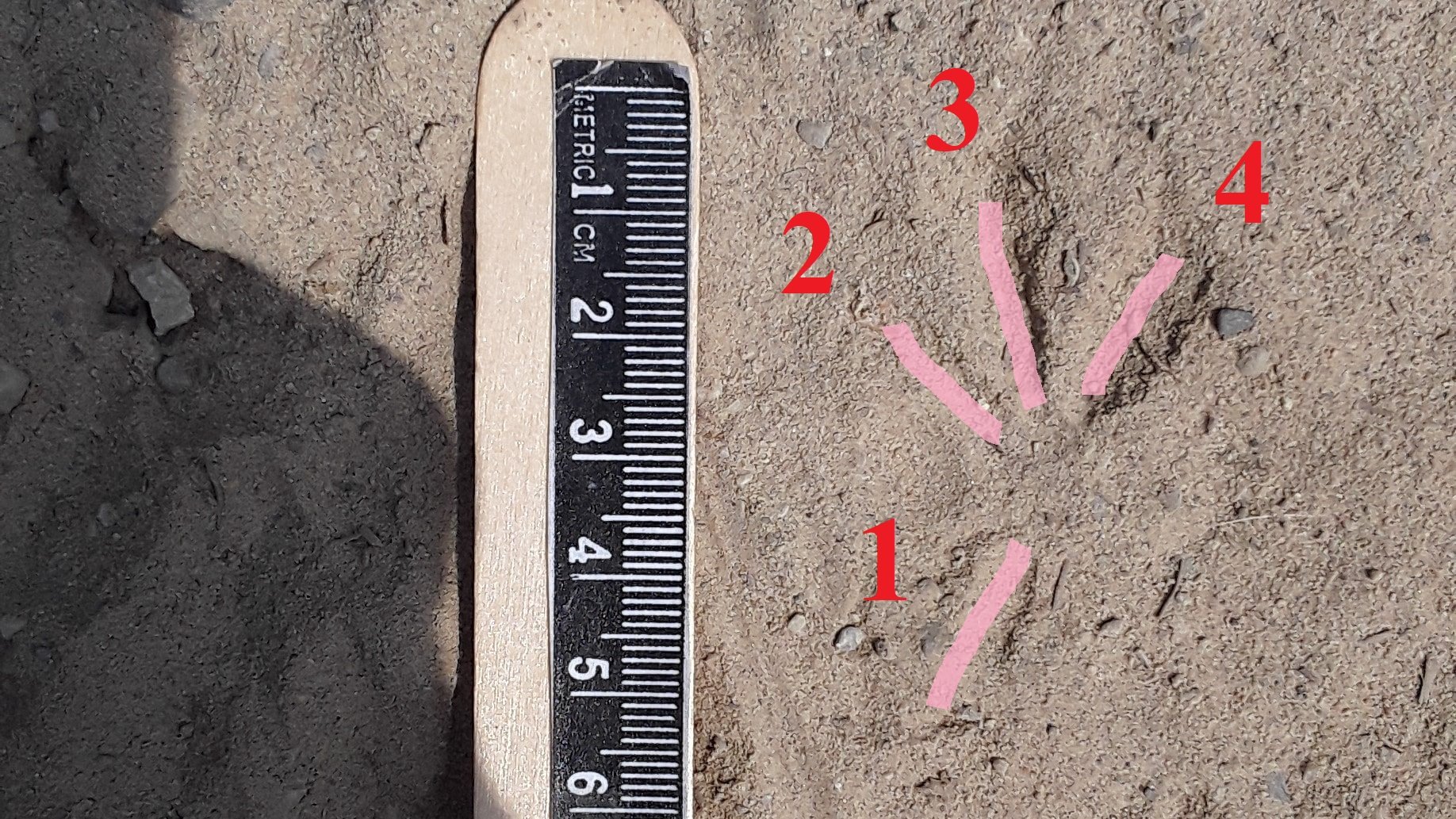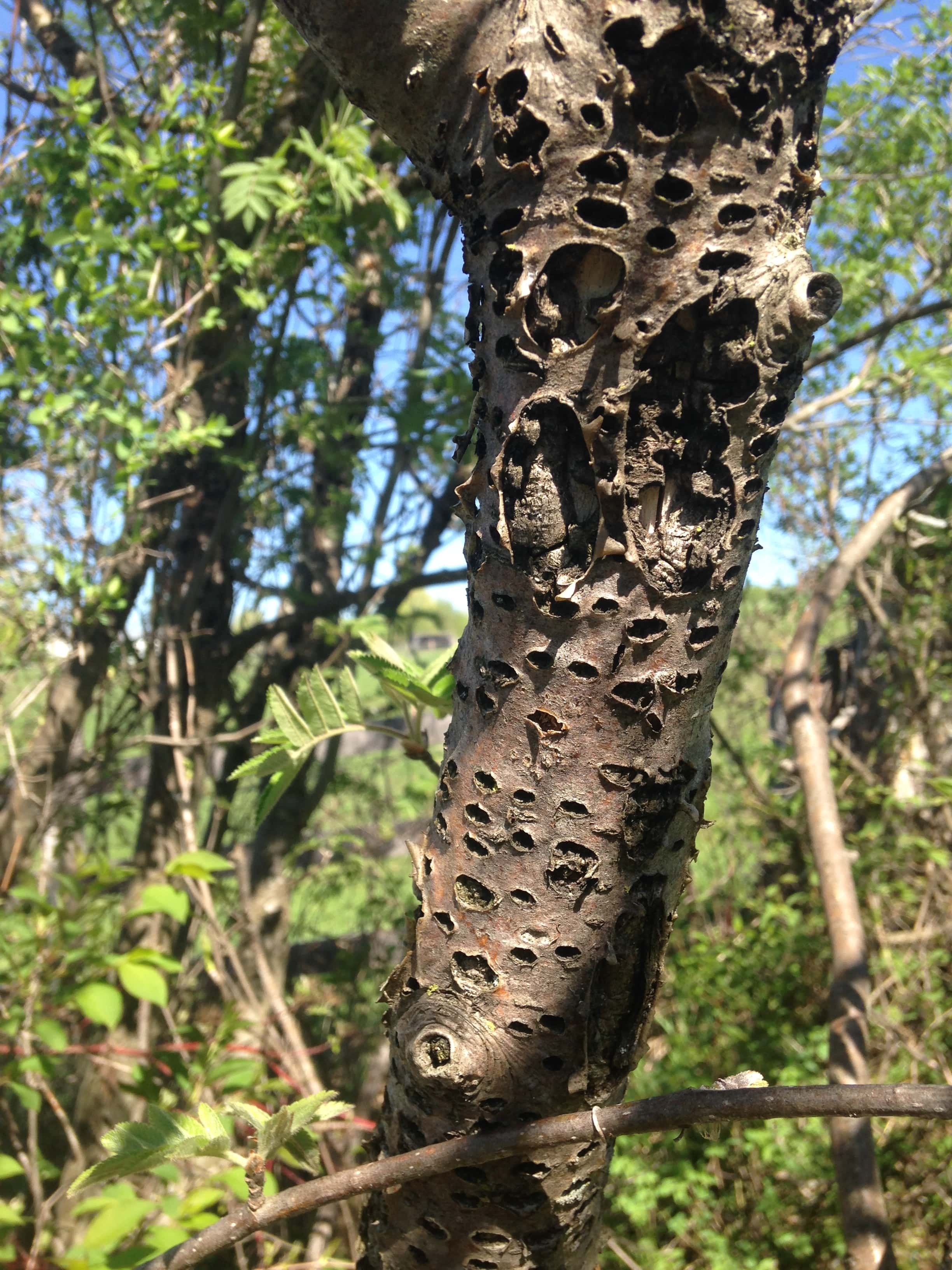
What’s going on out on the land?

Tracking Birds At Saugeen First Nations, 2023.06.10
We parked and got out of the vehicles after a long drive and took to the sand right away to find some good tracks. While we did discuss some Red Fox and some Coyote tracks and gait patterns, I was really looking forward to finding some bird tracks. I was eager for the beach but James called me over to show me a track he’d found. It was from a bird! This was a great start to our day together as I came with the intention of tracking birds and we were only about four metres away from the cars. We got down to check it out.

Along came a skull…
On Saturday October 29th, two days before the episode on my inappropriate appropriation of a Great Horned Owl skull aired, I drove to Mono Tract, North of Orangeville here in Ontario to pick up my partner from a day of learning about and harvesting roots from various species. I wasn’t there while they were doing this. Instead I was off at the Boyne Valley, still a little further North, trailing White-tailed Deer and looking for fungi, but when I arrived at the forest I was met with excitement about a skull.
As I came in, my friend handed me a small brown bag with a excited story about how they found a skull. I asked a couple of clarifying questions to seek out some basic answers, but things didn’t seem certain. I heard that there were talons, feathers, and some bones remaining, that the remains seemed maybe a couple weeks old, but aside from some guesses there was i.d. on whose skull it was and how it got there.

A Short Note On Sapsucker Ecologies
About 1o minutes North of Orangeville, along the fence line of Bruce Trail at Dunby rd, there are a couple of American Mountain Ash trees. These trees are related to the other Sorbus species from around the world, but this one is native to the area. Shorter trees, compound leaves, bright red fruit all help to identify these trees in the warmer months. But in the Winter and early Spring when the leaves and fruit have fallen, the bark becomes a great focal point for local ecologies.
The rows of small holes of various age and sizes freckle the bark like oversized lenticels. It kind of looks like a canker or fungal infection, but it’s not. It is actually the work of a meticulous and skilled member of the Picidae family; the Yellow-bellied Sapsucker, a bird which I have not seen that often, but I have come across their sign quite a bit.

Ruffed Grouse Questions from 2022.01.15
Ruffed Grouse were all around us in the forest when we arrived. Many were heard, some were seen, but even more so, their tracks littered the forest floor. There were these sunken oval impressions generally in the shape of a Grouse body pressed into the snow. We put our hands in despite the -20°C temperatures and felt the bottom the impressions. There was a hard icy crust in some of them, but not in others. There was scat in a couple, but not all. All had long chains of tracks emerging from them, but none had discernable tracks leading to them. What was going on?

What happened to this Gull?
I was walking up the frozen river with some kids in tow. We’d been out for a few hours tracking when we were on the last stretch and one of the kids pointed to a small mound on the ice. “Look a Penguin!” I think she’d meant it as a joke, but I took note and walked towards the mound. I had walked along this frozen river the day before and hadn’t noticed a mound on the middle of the river bulging out of the ice. I couldn’t tell what it was at first, but my guess was that a log or branch had broken through somehow. As I got close, I learned it was nothing of the sort.

White Fragility and Fake Blues in a Blue Jay Feather
Lighter or whiter parts of feathers break down more readily. One of the reasons is that darker feathers contain different pigments. The pigments make them stronger and more resilient in the face of harsher conditions. Additionally, white and blue aren’t real colours at all but structural colours created by the structure of the feather itself. Check it out.

Osprey and headless fish at Bishop Mac
I went out to Bishop Mac with my pal Tamara to practice trailing Deer and Coyotes but when we got there we watched an adult Osprey fly in with a Goldfish and land atop a nest. We watched as the adult leaned over the brim and two small Osprey heads emerged. Almost as soon as the Osprey had arrived they took off again with the Goldfish still in their talons. We both thought this was strange…

Towards a better understanding of Turkey scat
Towards understanding Turkey scat. Looking at physiological differences in males and females which influcence the shape and structure of their scat. Why wonder about scat? Well… TRACKING!

Tracking Cooper’s Hawks along the Etobicoke Creek
I was exploring the northwestern end of the Etobicoke Creek trail on July 14th when I made my way into an Eastern White Pine plantation edging a creekside forest on the other side of the trail I was on. Near the opening of the trail I found a Robin carcass missing the head.
